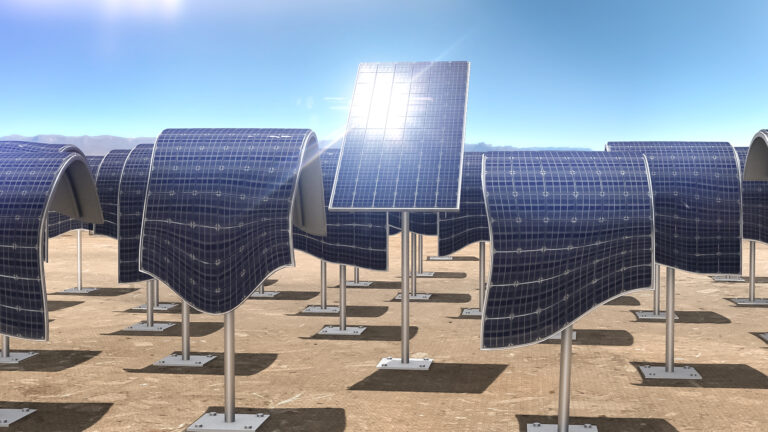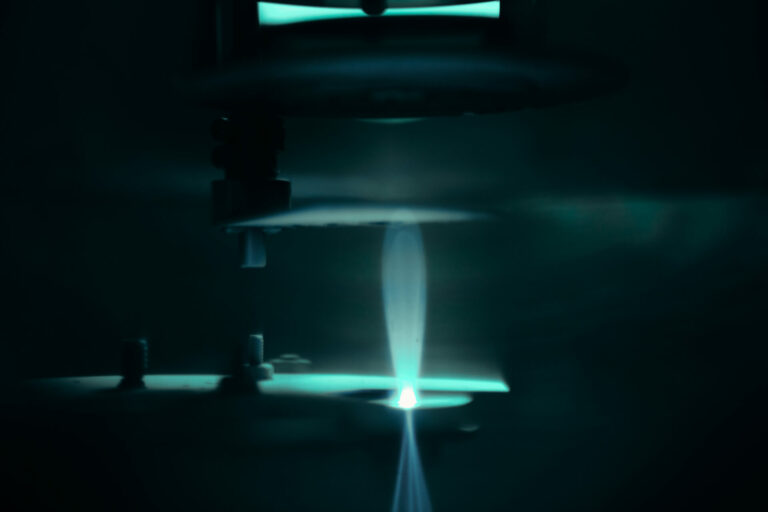Electrical Engineering
Lights up for chaotic storage
Chaotic optical resonators can trap more light energy than their orderly counterparts.


An illustration of the light energy spatial distribution in a chaotic resonator
© KAUST
Chaos tends to be something best avoided but now KAUST and an international team show that for certain devices such as optical resonators, chaos trumps order to increase their energy storage capacity compared to their classical counterparts1.
Andrea Fratalocchi, assistant professor of electrical engineering at KAUST, explains that a system is described as chaotic if it is highly sensitive to its inceptive conditions. In such systems, a tiny tweak in initial conditions can lead to seismic differences in the final outcome.
“Chaos is often seen as detrimental and we typically spend a lot of effort trying to minimize it in man-made devices,” says Fratalocchi. “However, if properly understood, chaos can underpin novel energy and imaging applications.”
Fratalocci’s team applied chaos theory to optical resonators — a major component of lasers — which are highly optimized devices that use an arrangement of mirrors for trapping light energy. However, this light energy is limited to narrow frequency bands: for example the widely used ‘L3’ photonic crystal, a two-dimensional optical resonator, can efficiently store certain wavelengths of light but not others. For this reason, conventional optical resonators have struggled with limited applications for the storage of light energy from broadband sources, such as sunlight.
The team performed a numerical simulation to show theoretically that a resonator with chaotic deformities can store up to six times as much energy as its conventional counterpart.
In testing this experimentally the team used a series of stadium-shaped planar photonic crystals with changes in their macroscopic geometry to produce varying degrees of chaos. The researchers showed that a fully chaotic optical resonator can trap twice as much energy as a non-chaotic optical resonator.
A good result but the researchers noted there was room for improvement.
They also studied the lifetime of photons of various light modes in chaotic optical resonators to find their values were approximately the same. They suggest convergence of photonic lifetimes has improved the transfer of energy which may explain the optical resonator’s improved storage capacity.
Although the researchers carefully controlled the shape of the planar photonic crystals, they were unsure if they had accurately estimated the energy stored inside these crystals. To check this they used a three-dimensional arrangement of polystyrene spheres, each modified to exhibit chaotic deformities. Their results showed that a fully chaotic sphere can absorb 10 per cent more energy from a halogen lamp, a broadband light source.
These results have potential for a novel series of application across physics and technology, say the researchers, which range from sensing to lasers, energy harvesting and cavity quantum electrodynamics.
References
- Liu, C., Di Falco, A., Molinari, D., Khan, Y., Ooi, B. S. et al. Enhanced energy storage in chaotic optical resonators. Nature Photonics 7, 473–478 (2013). | article
You might also like

Bioengineering
Giving voice to the voiceless through assistive technology

Applied Mathematics and Computational Sciences
A simple solution for frequency sharing

Electrical Engineering
Best thermal stability and efficiency in organic solar cells

Applied Mathematics and Computational Sciences
Staying online in the high-speed tube of the future

Electrical Engineering
Seeking stability to support sustainable outdoor solar cells

Computer Science
Outsmarting cyberattacks on microgrids

Applied Physics
Tough memory device aims for space missions

Applied Physics



